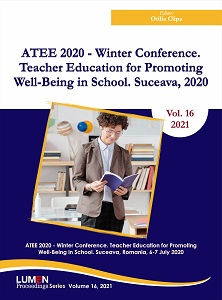Using QR Codes as Compensatory Measure for Students with TSI
Using QR Codes as Compensatory Measure for Students with TSI
Author(s): Robert Berezovski, Eugenia Jianu
Subject(s): Inclusive Education / Inclusion
Published by: Editura Lumen, Asociatia Lumen
Keywords: specific learning disabilities;dyslexia;QR code;
Summary/Abstract: In the context of new informational and communicative technologies (NTIC), the support for students with specific learning disabilities (TSI) should become increasingly easy to offer and implement. In accordance with the legal provisions of the methodological rules and their objectives, among the compensatory measures that can be offered to students with TSI during the teaching-learning process, is the use of computer / tablet with a software - vocal synthesizer, that turns the reading theme into a listening theme. In this category should also be included a smartphone with an application that allows reading the QR codes and that has the role of interpreting an image and decipher that code. The application can be downloaded from the App Store (for Apple products) or from the Play Store (for Android). Taking into consideration that these codes allow a huge data storage due to the fact that the writing of data is done both vertically and horizontally, their use in the educational process takes on new dimensions. QR codes can be used in the teaching-learning process for students with dyslexia, simply by scanning the code with the mobile. Once generated, this code is applied on the manual or on teaching material for which it was generated and simply by scanning the code with the phone, the students can access the manual or teaching material in audio, video and text formats.
Book: ATEE 2020 - Winter Conference. Teacher Education for Promoting Well-Being in School. Suceava, 2020
- Page Range: 70-77
- Page Count: 8
- Publication Year: 2021
- Language: English
- Content File-PDF

